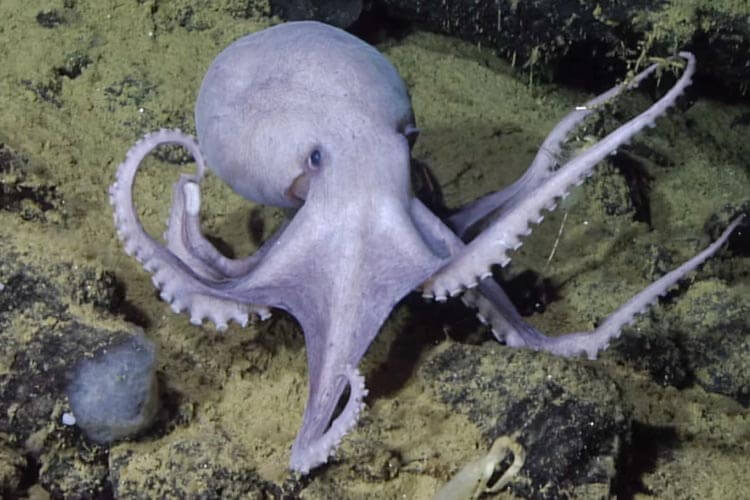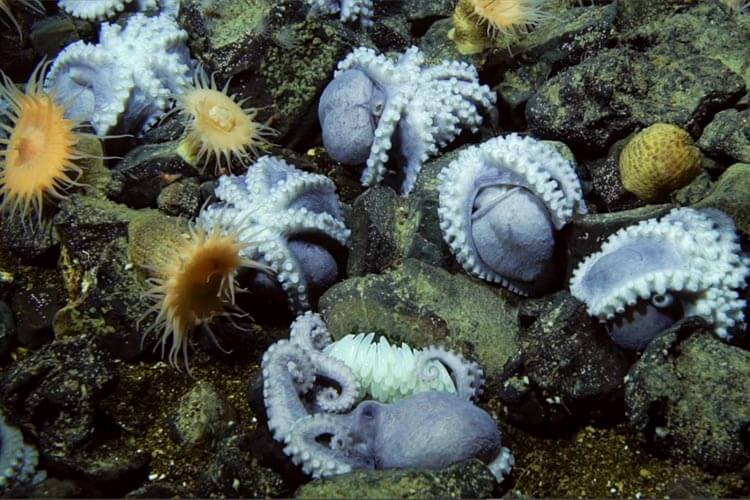
Thousands of breeding octopuses have been found in a deep sea ‘octopus garden’ near Monterey Bay, off the coast of California
Every human mother knows to keep a newborn wrapped up warm, and it seems our species isn’t alone in this need to keep our babies toasty. A recent study has revealed that pearl octopuses (Muusoctopus robustus), a beautiful pale blue creature living deep in the Pacific Ocean, also place enormous value on ensuring their young never get cold.
In 2018, what was later termed an ‘Octopus Garden’ was discovered on the Davidson Seamount, a vast deepwater outcrop sitting some 80km (130 miles) off the Pacific coast of Monterey Bay, California and at a depth of 1,249m (4,100ft). Thousands of mother octopuses were discovered huddled protectively around their eggs, waiting for them to hatch. In just one six-acre area, at least 6,000 nest sites were discovered, leading scientists to estimate that at least 20,000 octopuses were using the site.
Related articles:
The question was why? Mother octopuses remain with their eggs while they develop before dying of exhaustion shortly after the eggs hatch (many a human mother might well relate to this!) But, at such depths, the water is very cold. On average, around 1.6º Celsius. And, such cold water means that eggs would develop very slowly. The longer an embryo takes to develop, the greater the risk. Scientists believe that in such cold waters, it would take 5-10 years for the eggs to hatch, and such a long development phase means the chances of the young actually hatching are greatly reduced.
But it turns out that there’s something special about the Davidson Seamount. In certain areas, hydrothermal springs pump warmer water out into the ocean and scientists noted that octopuses tended to congregate around these vents. The ocean waters here averaged around 5.1º Celsius and scientists have recently discovered that this fairly significant temperature difference means that the octopus embryos here developed in just two years. This much shorter development phase means each egg has a much greater chance of hatching.

Muusoctopus robustus isn’t the only species of octopus to take advantage of hot water vents in the abyss. In June 2023, scientists announced the discovery of another octopus nursery surrounding hot water vents, used by a different – and possibly new to science – species of Muusoctopus off the coast of Costa Rica in even deeper water (2,800m, 9,186ft).
Shortly afterwards, another octopus nursery, this time belonging to the Graneledone pacifica species, which at 53 months, has the longest known gestation period of any animal, was discovered in deep waters off the coast of Canada and again vents ejecting warmer waters are thought to be the reason the octopus nest here.
And so it seems that swaddling your babes in an excess of warmth is the fastest way to get them out of the crib.
- Half of all mangrove forests at risk of collapse - 14 July 2024
- Fibreglass particles discovered in oysters and mussels - 4 July 2024
- Grey whales in the northeastern Pacific are shrinking - 19 June 2024


